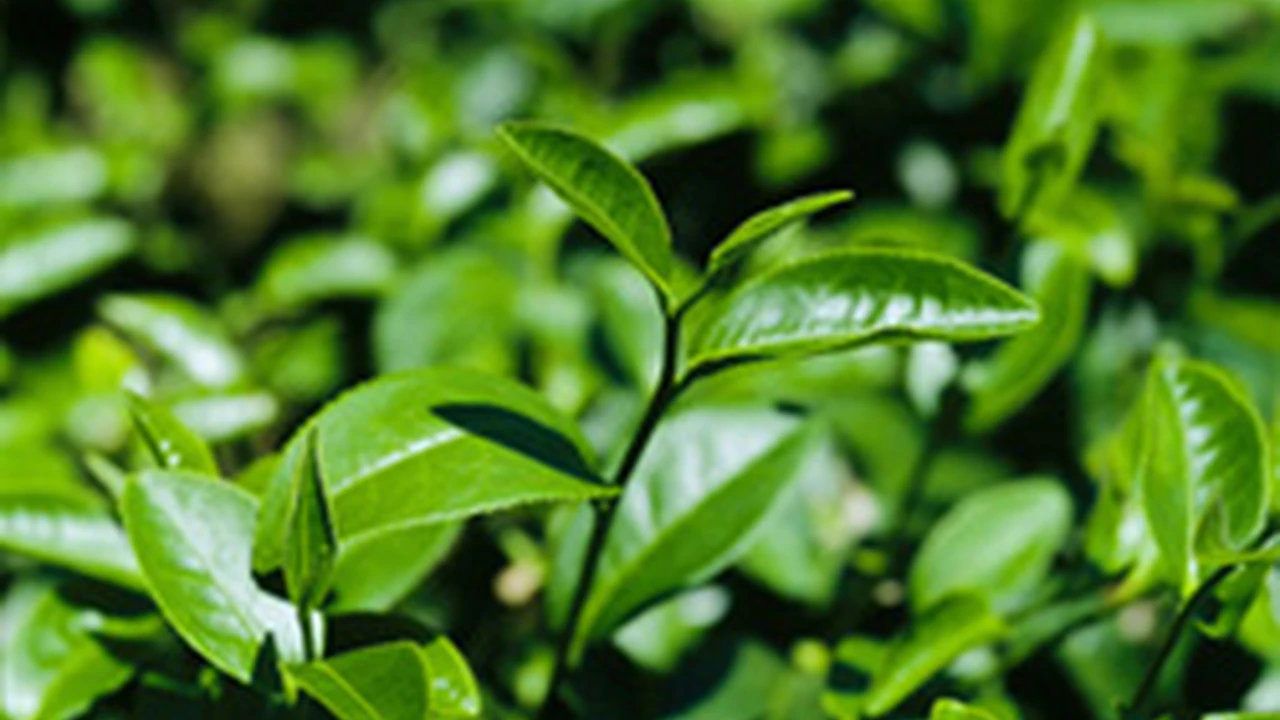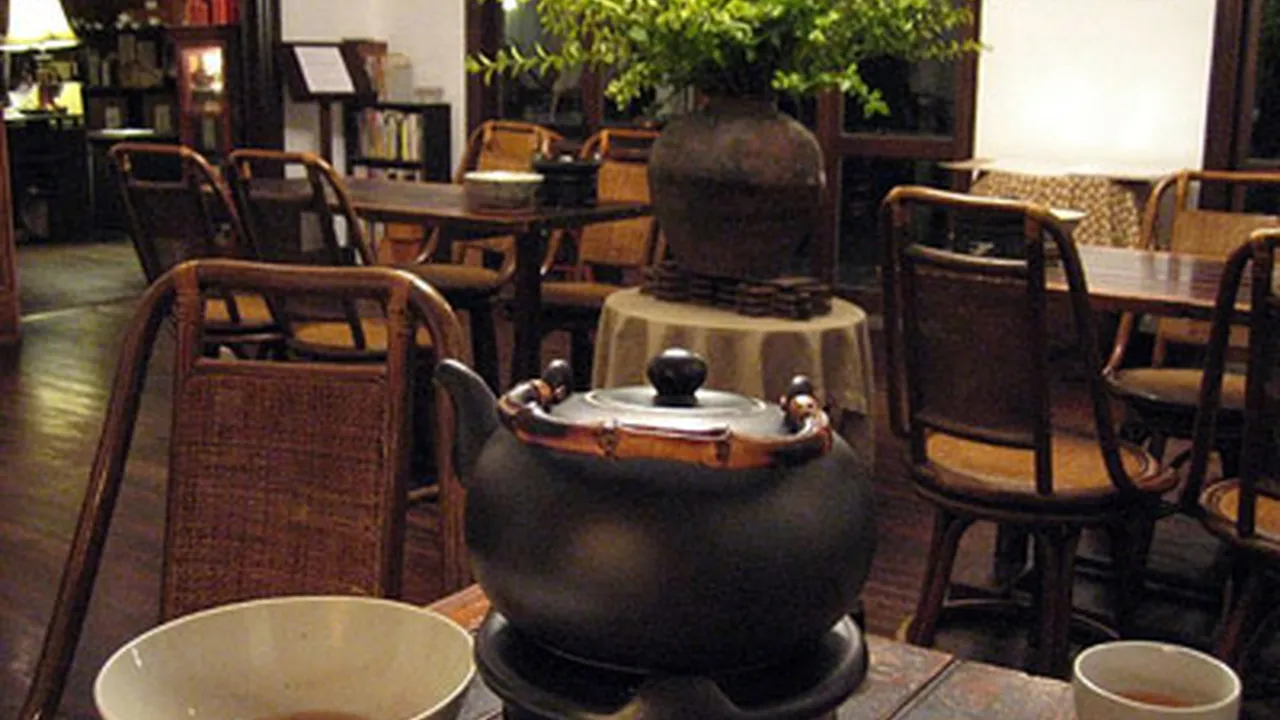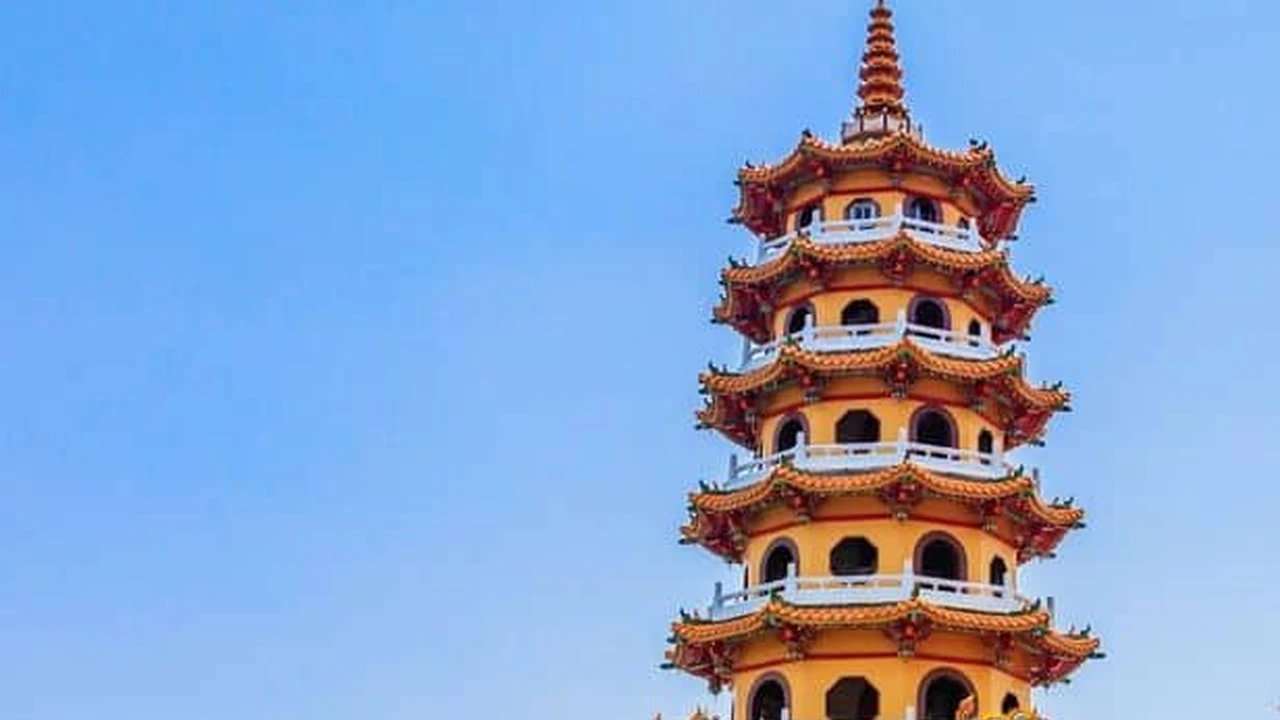Taiwanese Tea Culture: More Than Just a Drink
Sample meta description.

A Deep Dive into Taiwanese Tea Culture: History and Traditions
Taiwanese tea culture is rich and complex, steeped in history and tradition. It's far more than just a drink; it's a social ritual, a form of art, and a connection to the island's unique heritage. From the rolling hills of the tea plantations to the bustling tea houses in the cities, tea is woven into the fabric of daily life in Taiwan. The history of tea in Taiwan dates back centuries, with the introduction of tea plants from mainland China. Over time, Taiwanese tea farmers developed their own unique cultivation techniques and processing methods, resulting in a distinctive range of teas that are prized around the world. Let's explore the fascinating world of Taiwanese tea and understand why it holds such a special place in the hearts of the Taiwanese people.
The Art of Gongfu Tea Ceremony: A Taiwanese Tea Ceremony Guide
The Gongfu tea ceremony is a traditional method of preparing and serving tea that emphasizes precision, mindfulness, and appreciation. It's a slow and deliberate process that allows you to fully savor the aroma, flavor, and texture of the tea. The ceremony typically involves a small teapot (usually Yixing clay), a fairness pitcher (gongdaobei), small tasting cups, and a range of other specialized tools. The tea is brewed multiple times, with each infusion revealing different nuances of flavor. The Gongfu tea ceremony is not just about drinking tea; it's about creating a moment of peace and connection with yourself and others. It's a chance to slow down, appreciate the simple things in life, and cultivate a sense of mindfulness. Many tea houses in Taiwan offer Gongfu tea ceremony experiences, allowing visitors to learn about the art of tea preparation and enjoy the taste of authentic Taiwanese tea.
Oolong Tea Variety Showcase: Taiwanese Oolong Tea Flavors and Profiles
Taiwan is famous for its oolong teas, which are semi-oxidized teas that fall somewhere between green and black tea in terms of flavor and aroma. The level of oxidation can vary widely, resulting in a diverse range of oolong teas with distinct characteristics. Some popular Taiwanese oolong teas include:
- High Mountain Oolong (Gaoshan Cha): Grown at high altitudes, this tea is known for its delicate floral aroma, smooth texture, and lingering sweetness. Alishan and Lishan are two well-known high mountain tea regions.
- Dong Ding Oolong: A medium-oxidized oolong with a roasted flavor and a hint of sweetness. It's often described as having a nutty or caramel-like aroma.
- Oriental Beauty (Bai Hao Oolong): A heavily oxidized oolong with a unique honey-like flavor and aroma. This tea is often bitten by tiny leafhoppers, which contribute to its distinctive character.
- Four Seasons Spring (Si Ji Chun): A relatively new variety of oolong that can be harvested year-round. It's known for its fresh, floral aroma and its ability to withstand multiple infusions.
Taiwanese Tea and Food Pairings: Enhancing Your Tea Experience
Tea and food can be a delightful combination, with the right pairings enhancing both the flavors of the tea and the food. For example, a light and floral High Mountain Oolong pairs well with delicate pastries or fruit tarts. A roasted Dong Ding Oolong complements savory dishes like dumplings or stir-fries. An Oriental Beauty Oolong, with its honey-like sweetness, is a perfect match for desserts like cakes or cookies. Experimenting with different tea and food pairings can be a fun and rewarding way to explore the world of Taiwanese tea.
Beyond the Cup: Taiwanese Tea in Cooking and Desserts
Taiwanese tea is not just for drinking; it's also used in a variety of culinary applications. Tea leaves can be added to soups, stews, and stir-fries to impart a unique flavor and aroma. Tea powder is often used in desserts like cakes, cookies, and ice cream. Tea-infused sauces and marinades can add depth and complexity to meat and vegetable dishes. The possibilities are endless! Using Taiwanese tea in your cooking can be a great way to add a touch of Taiwanese flavor to your favorite recipes.
The Social Aspect of Tea Drinking: Taiwanese Tea Houses and Community
Tea houses are an integral part of Taiwanese culture, serving as gathering places for friends, family, and colleagues. They provide a relaxed and comfortable environment where people can enjoy tea, chat, and socialize. Tea houses often offer a wide variety of Taiwanese teas, as well as snacks and light meals. They're a great place to experience the social aspect of tea drinking and to connect with the local community. Many tea houses also host tea ceremonies and workshops, providing opportunities to learn more about Taiwanese tea culture.
Sustainable Tea Farming in Taiwan: Ethical Sourcing and Environmental Concerns
Sustainable tea farming is becoming increasingly important in Taiwan, as farmers strive to protect the environment and ensure the long-term viability of their tea plantations. Sustainable practices include using organic fertilizers, minimizing pesticide use, and conserving water resources. Some tea farms are also working to promote biodiversity by planting native trees and creating habitats for wildlife. When buying Taiwanese tea, look for certifications like organic or Fair Trade to support sustainable tea farming practices.
Buying Taiwanese Tea: A Guide to Selecting Quality Tea
When buying Taiwanese tea, there are a few things to keep in mind to ensure that you're getting a quality product. Look for tea that is fresh, fragrant, and free of blemishes. Consider the origin and processing method of the tea, as these factors can significantly affect its flavor and aroma. If possible, sample the tea before you buy it to make sure you like the taste. Reputable tea shops and online retailers can provide valuable information and guidance to help you choose the right tea for your preferences.
Tea Tourism in Taiwan: Visiting Tea Plantations and Tea Regions
For tea lovers, a visit to Taiwan's tea plantations and tea regions is a must. You can explore the rolling hills of the tea farms, learn about the tea-making process, and sample a variety of fresh teas. Many tea farms offer tours and tastings, providing a hands-on experience of Taiwanese tea culture. Popular tea regions include Alishan, Lishan, and Sun Moon Lake. Visiting these regions can be a great way to immerse yourself in the world of Taiwanese tea and to connect with the people who grow and produce it.
Health Benefits of Taiwanese Tea: Antioxidants and Wellness
Taiwanese tea is not only delicious but also offers a range of health benefits. It's rich in antioxidants, which can help protect the body against cell damage and reduce the risk of chronic diseases. Studies have shown that tea consumption may improve cardiovascular health, boost the immune system, and even promote weight loss. Different types of tea offer different health benefits, so it's worth exploring the various varieties to find the ones that are right for you. Drinking Taiwanese tea regularly can be a simple and enjoyable way to improve your overall health and well-being.
Recommended Taiwanese Tea Products, Usage Scenarios, Comparisons, and Prices
Now, let's get into some specific product recommendations, usage scenarios, comparisons, and price ranges. Keep in mind that prices can vary depending on the vendor, quality, and quantity.
High Mountain Oolong (Gaoshan Cha) Recommendations and Details
Product 1: Alishan High Mountain Oolong (阿里山高山茶)
Description: Grown in the Alishan region at altitudes above 1000 meters, this tea boasts a light, floral aroma with a creamy, smooth texture. It's known for its lingering sweetness and refreshing aftertaste.
Usage Scenario: Perfect for a relaxing afternoon tea, a quiet moment of contemplation, or sharing with discerning guests. It's also a great choice for those new to Taiwanese oolong due to its approachable flavor profile.
Comparison: Compared to Lishan High Mountain Oolong (another popular variety), Alishan tea tends to be slightly more floral and less intensely sweet. It's also generally more readily available and slightly more affordable.
Price: Expect to pay between $30-$80 USD per 150g (5.3 oz) depending on the grade and vendor.
Product 2: Lishan High Mountain Oolong (梨山高山茶)
Description: From the Lishan region, known for its even higher altitudes (often above 2000 meters), this oolong is characterized by its intense sweetness, almost buttery texture, and complex aroma with hints of orchid and stone fruit.
Usage Scenario: Ideal for special occasions, gifting to tea connoisseurs, or savoring when you want a truly exceptional tea experience. The high altitude and cooler temperatures contribute to a slower growth rate, resulting in a more concentrated flavor.
Comparison: Lishan oolong is generally considered to be of higher quality and commands a higher price than Alishan oolong. The taste is often described as more complex and intensely sweet. It is also more difficult to find and often sells out quickly.
Price: Expect to pay between $50-$150 USD per 150g (5.3 oz), potentially even more for rare or exceptionally high-grade leaves.
Dong Ding Oolong (凍頂烏龍) Recommendations and Details
Product 1: Traditional Roasted Dong Ding Oolong (傳統焙火凍頂烏龍)
Description: A medium-oxidized oolong that has undergone a roasting process, giving it a distinctive roasted flavor with notes of caramel, nuts, and toasted grains. The roasting process also reduces the astringency and enhances the sweetness.
Usage Scenario: A great everyday tea, suitable for drinking throughout the day. The roasted flavor pairs well with savory foods and can be enjoyed both hot and cold.
Comparison: Compared to lightly oxidized oolongs, Dong Ding has a bolder, more robust flavor. It also has a longer shelf life due to the roasting process.
Price: Expect to pay between $20-$50 USD per 150g (5.3 oz).
Product 2: Lightly Roasted Dong Ding Oolong (輕焙火凍頂烏龍)
Description: A more modern take on Dong Ding, this version undergoes a lighter roasting process, preserving more of the tea's natural floral and fruity notes. It offers a balance between the roasted flavor and the refreshing qualities of a lighter oolong.
Usage Scenario: A good choice for those who enjoy oolong tea but prefer a less intense roasted flavor. It's also a versatile tea that can be paired with a variety of foods.
Comparison: Lighter and more refreshing than traditional roasted Dong Ding, with a more pronounced floral aroma. It's a good stepping stone for those who want to explore the nuances of Dong Ding without being overwhelmed by the roasted flavor.
Price: Expect to pay between $25-$60 USD per 150g (5.3 oz).
Oriental Beauty (Bai Hao Oolong) Recommendations and Details
Product 1: Premium Oriental Beauty Oolong (頂級白毫烏龍)
Description: A heavily oxidized oolong that is bitten by tiny leafhoppers, triggering a unique chemical reaction that results in a honey-like sweetness and complex aroma. The leaves have a distinctive appearance with white tips (Bai Hao).
Usage Scenario: Best enjoyed on its own, allowing you to fully appreciate its unique flavor profile. It's a tea that demands attention and rewards careful tasting. It's also a great conversation starter and a fascinating tea to share with others.
Comparison: Unlike other oolongs, Oriental Beauty is heavily dependent on the leafhoppers for its unique flavor. The quality can vary depending on the number of bites and the skill of the tea maker.
Price: Expect to pay between $40-$120 USD per 150g (5.3 oz), potentially even more for exceptional grades.
Product 2: Standard Grade Oriental Beauty Oolong (標準白毫烏龍)
Description: A more affordable version of Oriental Beauty, but still retaining the characteristic honey-like sweetness and complex aroma. The leaves may have fewer white tips and the flavor may be less intense than the premium grade.
Usage Scenario: A good entry point to the world of Oriental Beauty, allowing you to experience its unique flavor profile without breaking the bank. It's a versatile tea that can be enjoyed throughout the day.
Comparison: Less complex and less intensely sweet than premium Oriental Beauty, but still a delicious and rewarding tea. A good value for those on a budget.
Price: Expect to pay between $30-$80 USD per 150g (5.3 oz).
Four Seasons Spring (Si Ji Chun) Recommendations and Details
Product 1: Fresh Four Seasons Spring Oolong (新鮮四季春烏龍)
Description: A lightly oxidized oolong known for its fresh, floral aroma and ability to be harvested year-round. It's a relatively new variety that has gained popularity for its consistent quality and affordable price.
Usage Scenario: A great everyday tea, suitable for drinking throughout the day. Its refreshing flavor makes it a good choice for hot weather.
Comparison: Compared to other oolongs, Four Seasons Spring is less complex and has a more straightforward flavor profile. However, its consistent quality and affordability make it a popular choice.
Price: Expect to pay between $15-$40 USD per 150g (5.3 oz).
Product 2: Roasted Four Seasons Spring Oolong (焙火四季春烏龍)
Description: A Four Seasons Spring oolong that has undergone a light roasting process, adding a subtle roasted flavor and enhancing its sweetness.
Usage Scenario: A good alternative to the fresh version, especially for those who prefer a slightly more robust flavor. The roasting process also extends the shelf life of the tea.
Comparison: More complex and flavorful than the fresh version, with a subtle roasted aroma. A good choice for those who want a bit more depth in their Four Seasons Spring tea.
Price: Expect to pay between $20-$50 USD per 150g (5.3 oz).
:max_bytes(150000):strip_icc()/277019-baked-pork-chops-with-cream-of-mushroom-soup-DDMFS-beauty-4x3-BG-7505-5762b731cf30447d9cbbbbbf387beafa.jpg)






